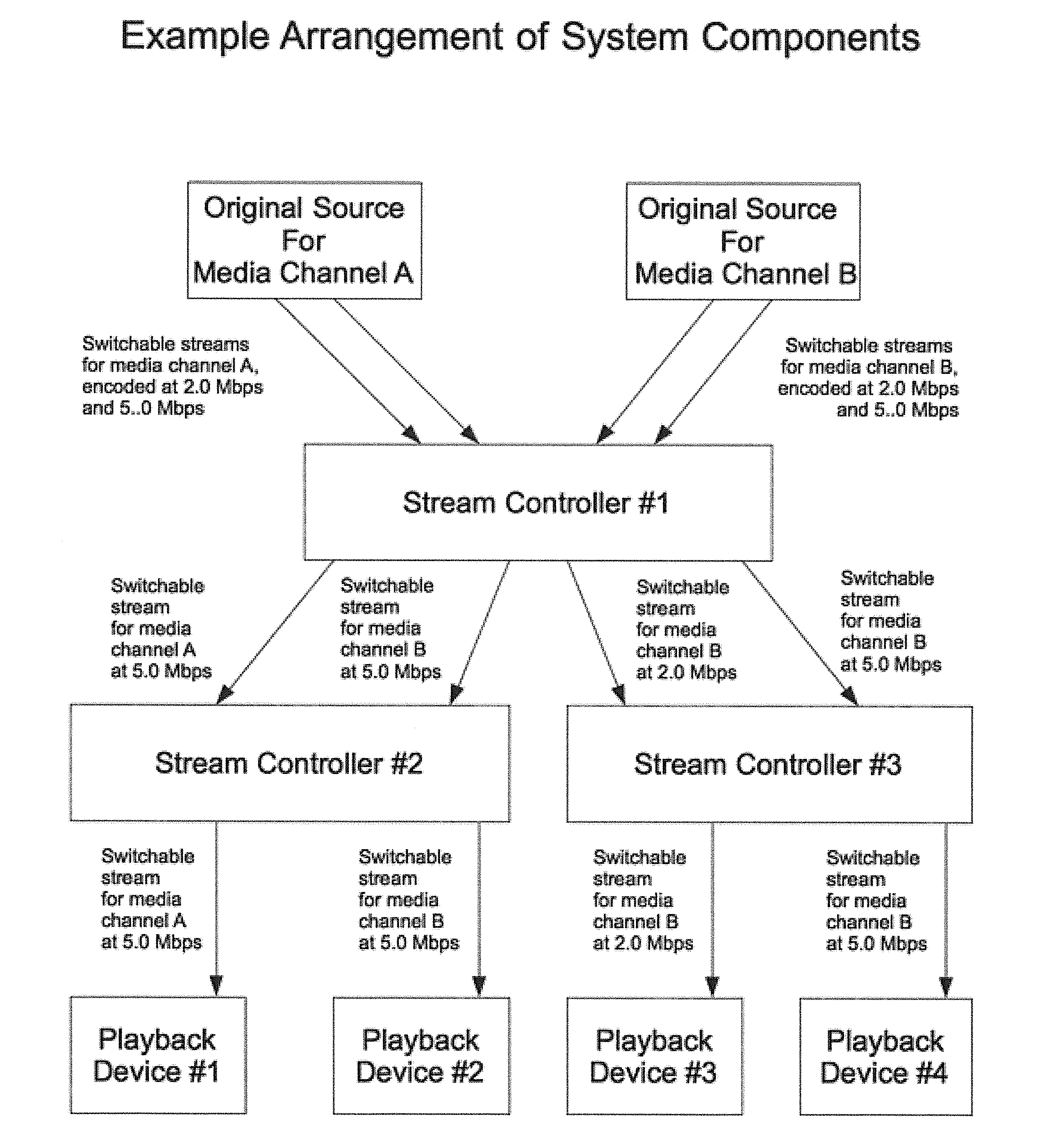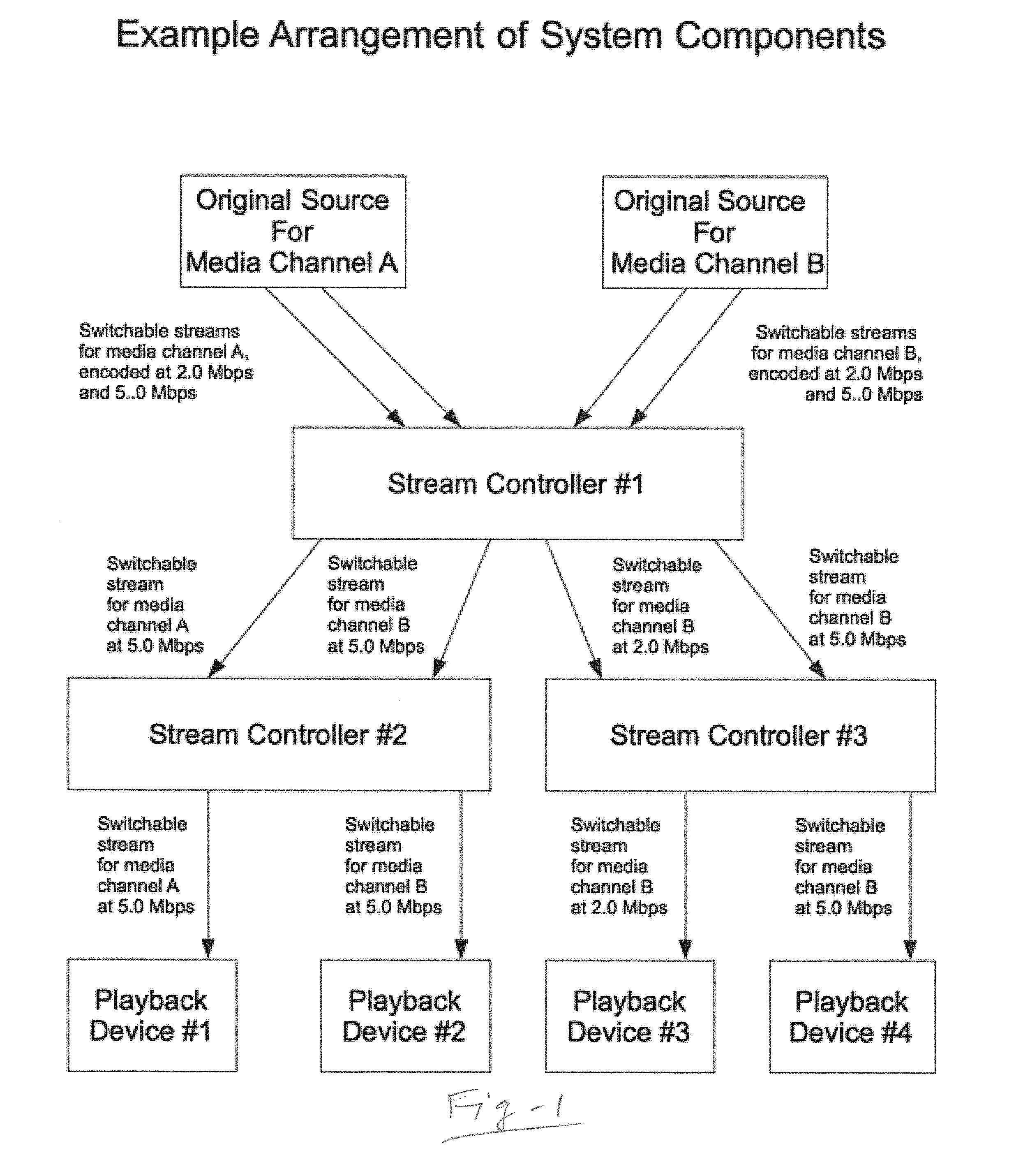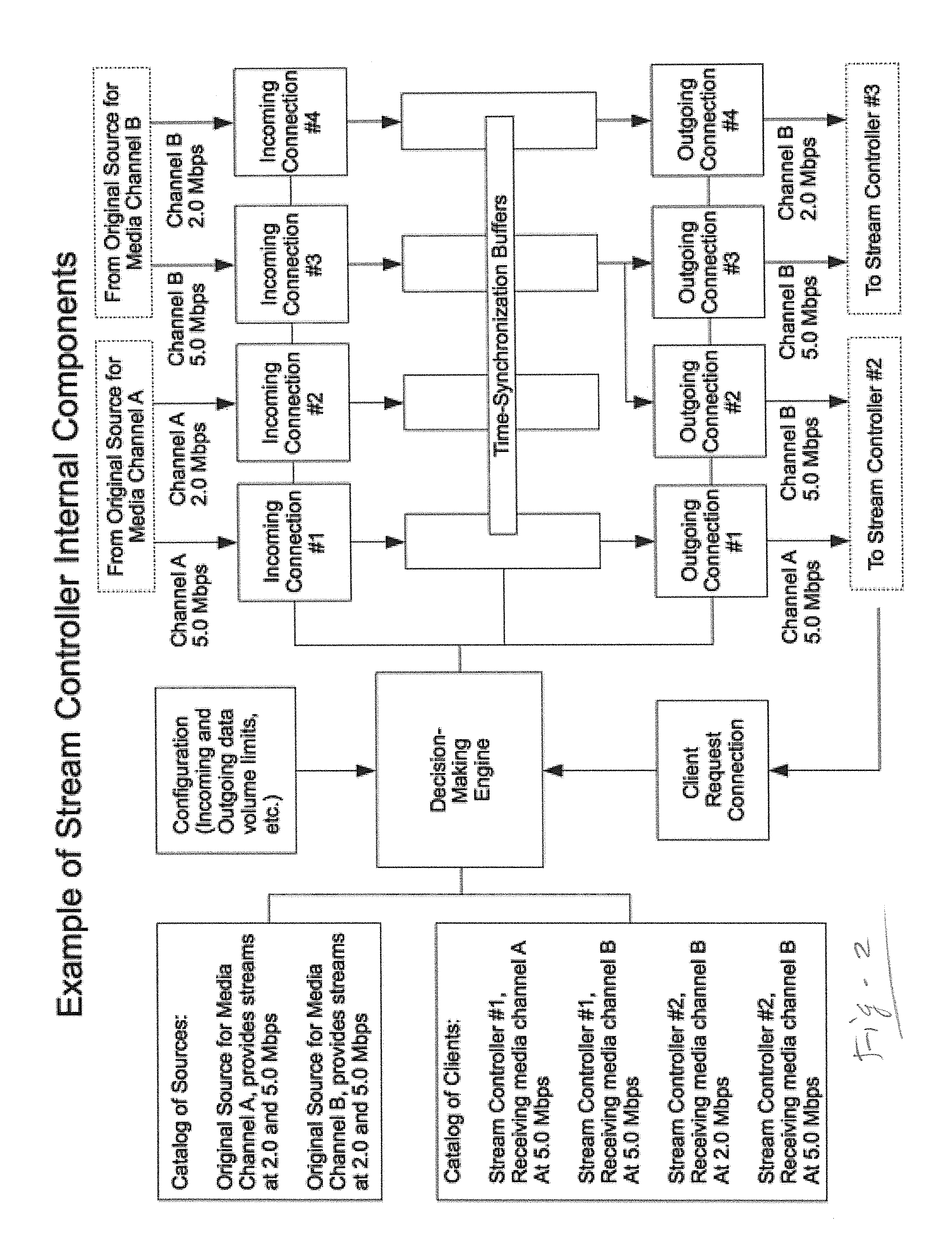Providing reliable audio /
video delivery to a wide body of consumers over IP networks presents the content provider with several challenges.
In practice, however, a provider can deliver content to consumers with low-volume connections by changing the characteristics of the audio / video data so as to allow delivery of the same content with less data, though with reduced playback quality.
Attempting to deliver content with a higher volume of data than the
consumer can effectively receive will result in
data loss which will cause discontinuity and corruption in the final audio / video playback.
Another challenge is that consumers may wish to use a wide variety of devices to play back the audio / video data.
Each device may have a different capacity for playing back content, and may further
restrict the volume of data that can be effectively delivered to the
consumer.
A further challenge is that a consumer's capacity to receive data may change from time to time.
This may occur due to factors outside the consumer's control (data demands from other consumers; network failures and interference; etc.) as well as conditions controlled by the consumer (moving a device with
wireless access closer to or further away an in-house access point; activating other devices in the home which may compete for data consumption; etc).
Yet another challenge is that many consumers will wish to receive “real time” content, such as ongoing sporting events or concerts, or “broadcast” content in the form of network
broadcast channels which transmit programs continually, one after another, at scheduled times. Consumers will wish to receive this content “now,” at the same time that other consumers (who may not have the same provider) will be seeing the same content.
For instance, if a provider has 10,000 consumers, and 20 of those consumers reside in the same
apartment building and share a single narrow
network connection into the building, it would not make sense to transmit all possible live content to that
apartment building, since this would overload the building's
network connection.
However, delivering a full copy of the content to a consumer is undesirable for two primary reasons.
First, the
client may not possess sufficient data storage capacity to store the entire body of the
media content.
Second, the time required to deliver the content will produce a substantial
delay (possibly as long as hours) between the time the consumer indicates a desire to receive the content and the time that the consumer is actually able to begin playing back the content.
There may also be copyright issues involved with full-copy distribution.
In addition, choosing a single bitrate leaves the consumer vulnerable to periodic fluctuations in
network availability, which may periodically reduce a consumer's capacity to receive data, and so a high-bitrate stream which the consumer had been receiving without difficulty is now too large for the consumer to receive on a timely basis.
And, of course, the provider cannot simply transmit the same content at several bitrates to the consumer, since this increases the consumer's data load rather than reducing it.
This solution, however, requires data to be sent separately to each consumer, and does not allow for more efficient use of network resources by technologies such as
multicast.
In addition, this solution, as well as any similar adaptive solution requiring intelligence or decisions from the
client device, requires a specially-constructed
client device or client
software application, and cannot be implemented using off-the-shelf IP
television set-top boxes which expect to passively receive audio / video IP data in a single continuous stream.
In this way, the
server has provided data to one hundred clients, even though it only sent the
original data ten times. This is a common IP technology, but currently, many wi-fi access points do not
handle multicast traffic well, and consumers using wi-fi access points would not be able to reliably receive content delivered via
multicast.
Adding more FEC data, however, increases the total size of the
data stream, and so the provider must balance the need for smaller data streams against the need to allow clients to recalculate lost data.
When the rate of
data loss has exceeded the ability of the FEC
algorithm to recalculate the lost data (based on the amount of FEC provided) then
data loss is inevitable.
This, however, is another case where the solution does not provide for a traditional television-style viewing experience, where consumers are accustomed to being able to watch video content as soon as they turn on their television and select a channel.
Also, this solution is only effective so long as the client is able to keep some amount of data in its buffer.
If the client exhausts its buffer due to frequent or prolonged loss of
signal from the source, the client will no longer have any data to provide for playback, and must halt until delivery of data can be restored.
However, this protocol does not guarantee timely delivery of data, and delays in delivery may be experienced due to
network conditions.
This may interrupt smooth playback on the client end, and may also
delay data so that it is no longer being delivered close to real time, in situations where a “live” real-time stream is being provided.
In summary, consistent delivery of media data over large, generally unmanaged networks continues to be a common problem.
 Login to View More
Login to View More  Login to View More
Login to View More 


